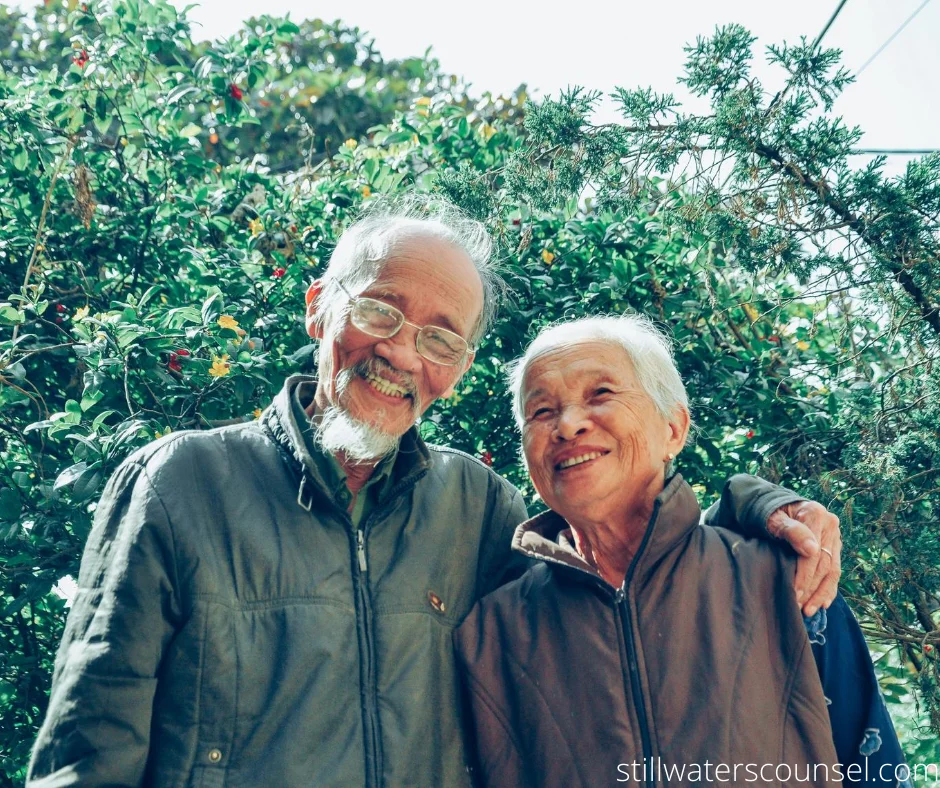This blog is part one of a four-part series on Authenticity in Relationships. Keep your eye out for some valuable lessons on how you can improve your relationship.
What does it mean to be authentic? Words like truthfulness, genuineness, real, believable, etc. may be swirling around in your head. All those words are related to authenticity. Now, how would you apply that to relationships?
Some people would say that being authentic in a relationship means being faithful, not being deceptive and not skirting around issues.

As a therapist, a common problem I encounter when working with couples is communication issues. Surprisingly, the root of this often stems from one or more partners being afraid to show their authentic self. Many couples may not know how to be authentic, so I’m here to help you understand what that can look like.
How to Be More Authentic in Relationships
Never forget that you’re on the same team
Perfect relationships don’t exist. As much as movies and the media like to sell us the idea of a flawless, always passionate romance, we know that real life is a much different reality. Arguments and disagreements are inevitable, but they’re normal within reason. One of the worst things you can do in your relationships is to adopt a “me vs them” mindset. When you’re in a couple, you are playing on the same team. It’s easy to be on the defensive when your partner starts pointing out you doing something they didn’t like, and you retaliate in defense.
Think of the act of blaming as a storm. Once the initial thunder occurs, then the rain pours and floods the area. Afterwards you realize you can’t take back what happened or what you said, and now you’re left to clean up the mess. When you get frustrated with your partner, take a moment and think about what you’re about to say. Is the purpose of what you’re going to say meant to harm your partner? Are you trying to be right or do you have a genuine concern that needs to be addressed? Arguments aren’t pretty, but they can be constructive when couples communicate in a direct, fair and calm manner.

Set your boundaries
It’s never too late to set your boundaries. As relationships evolve, so do you as an individual. As you grow as a person, your beliefs may change and so will your mindset. While you may have been tolerant of certain comments or behaviors in the past, it’s perfectly normal to change your mind. Your partner may be surprised at you reestablishing your boundaries, but being transparent about these new boundaries may help prevent potential conflicts from happening. Encourage your partner to be open as well about what they need to thrive in the relationship and feel even more comfortable.

Be Each Other’s Confidante
No matter how long you’ve been together as a couple, whether it’s been 2 months or 20+ years, you have to be able to trust each other. That means being clear on what is shared outside of your relationship and with whom. Sharing confidential information can break down relationships and lead to distrust between partners. It might be tempting to share good news with family and friends, but if it needs to be kept under wraps for a while (such as a pregnancy, promotion, or prospective move) then remember to respect your partner’s wishes. When the time is right and you can announce the news together, it will make the sharing of the news even more special.

Explore a New Sense of Authenticity
Sometimes to strengthen a relationship, you need to tread new waters together. This can be as small as trying a new activity together, or taking the brave step to seek couples therapy. Incorporating new hobbies can be exciting and show you new sides to your partner that you haven’t seen before.

A common tool that is used to help couples make sense of what they want out of relationships is understanding their “love languages”. You can take it for free at this link https://www.5lovelanguages.com/quizzes/
What are Love Languages?
Love languages are a concept developed by Dr. Gary Chapman, back in 1992. These “languages” are the way we express love and how we’d like to receive these acts of love. There are 5 primary languages couples have:
Words of Affirmation: This is when a partner uses positive verbal communication to express their love. This can include frequent compliments, being encouraging, saying “I love you” often, and reassurance.
Quality Time: This act is shown through the dedication of someone spending time with their partner. These people are often great listeners, give their undivided attention to their partners, and relish each other’s company.
Acts of Service: The people who favor acts of service perform duties that benefit their partner, typically to alleviate stress. This can include cooking, doing chores without prompting, or running an errand for their partner.
Gifts: This one is self-explanatory. Gifts don’t have to be grandiose, but are often frequently given to a partner. Food is a common gift given between partners!
Touch: Physical touch is a popular love language that is important to many couples. While some partners recoil at touch, many crave these types of interactions. Kissing, handholding, and hugging are common behaviors in touch-centric enthusiasts.

Which love language are you most in tune with and how you do practice being your authentic self in your relationship? Are you aware of your partner’s love language, and are you comfortable speaking their language to them?
Keep your eye on for next week’s article, where I’ll be talking about using vulnerability in your relationship to take it to the next level.
If you and your partner would like to privately discuss ways to improve your communication and needs within your relationship, please don’t hesitate to reach me. Thank you for reading!
